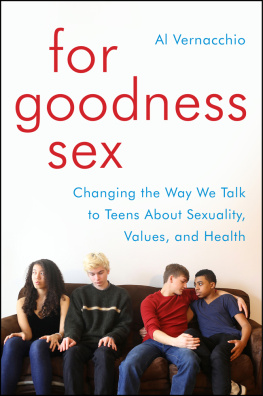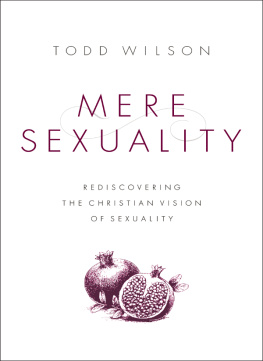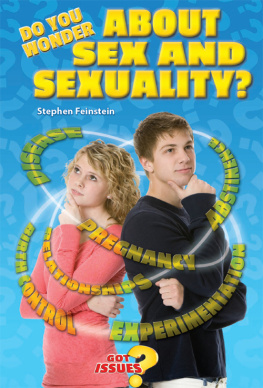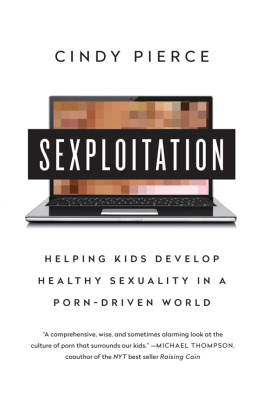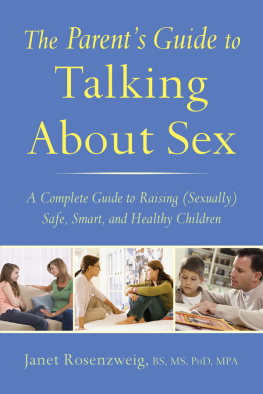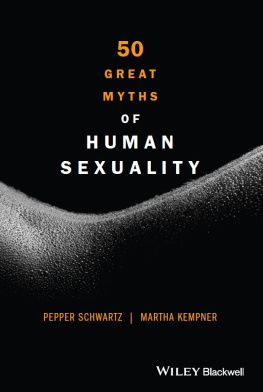To my students past and present, who bring meaning, purpose, and joy to my work, and to Michael, who brings meaning, purpose, and joy to my life.
Contents
Introduction:
Sexuality as a Force for Good
P eople often ask me, What do you think of the state of sex in America today? I always quote my friend Jeanmarie, who says that were sexually repressed to the point of being sexually obsessed. Let that sink in a bit because its the best description I have for how we treat sexuality in this country. We are a nation founded by people who saw sex as something sinful, and this sex-negative view has followed us all the way to the twenty-first century. Its made us into a society thats incredibly uptight and uncomfortable when it comes to talking openly about sex. Yet when we flip through Vogue and come across a racy Dolce & Gabbana ad or find ourselves engrossed in the bestselling book Fifty Shades of Grey , were as titillated by our interest as we are disgusted by it.
Sexuality education today typically falls into one of two categories. There is abstinence-only sex education, and theres abstinence-based sex ed, Leslie Kantor, vice president of education for Planned Parenthood Federation of America, recently told the New York Times . Theres almost nothing else left in public schools. When the HIV/AIDS epidemic broke out in the early eighties, there was a steady stream of funding for programs teaching safer sex. But most of that funding went to abstinence education, which aimed to keep teenagers from having any sexual activity at all, largely by limiting information to the most basic biological facts and relying on fear-based tactics that highlighted the dangers of sex. Some of you probably remember an abstinence-education video that was often shown in classrooms in the 1980s and 90s called No Second Chances . In the film, a teenager asks a school nurse, What if I want to have sex before I get married? The nurse responds, Well, I guess youll just have to be prepared to die.
In 2011, President Obama gutted the budget for abstinence-only education, in part because theres no evidence that it stops kids from engaging in sexual intercourse. According to a government report, prepared by Representative Henry A. Waxman, many abstinence-only programs also taught scientific inaccuracies about sex. The Waxman Report notes that one federally funded program passed out materials that said that HIV/AIDS could pass through a condom because the latex is so porous, which experts say isnt true. Sexuality educators today can be so stifled by school boards that, according to the New York Times Magazine , some are asked in job interviews if they can teach sex ed without saying the word sex . Both abstinence-based and abstinence-only approaches rely on disaster prevention, meaning that educators are presenting sex and its consequences as dangerous, potentially catastrophic events. Sex can kill you or ruin your life.
Is that really what sex is to us? Its not what it is to me, and I doubt thats what sex is to you. But how can we possibly expect young people to go from those scary, sex-negative messages to establishing relationships based on trust, intimacy, and pleasure? How can you have a good sexual relationship when no one ever tells you how to do that? Theres plenty of talk about what not to do, but that doesnt automatically provide a road map for creating a happy and successful sexual life.
Its the silence from the trusted adults in their lives that leads so many kids to go to the Internet for answers. If you Google what is oral sex, fingering, or falling in love, you get millions of hits, and many of them are from sources you wouldnt want your kids to trust. Its likely your child will click from one pornographic site to the next in search of an explanation that could have been provided by you in a few sentences. The types of images they see online are bound to give them an unhealthy view of gender and sexual activity. Unfortunately, were living in a world where Internet pornography is the basic template that many kids use to define what sex is like, what theyre expected to do physically in a relationship, and how theyre supposed to look when theyre doing it.
Chances are that if youre not talking to your kids about sex, their sexual education is more like a junk food diet; theyre picking up whatever they can from movies, commercials, TV, video games, and online porn. Thats why I strive so hard in my classes to help kids see themselves accuratelyas sexual beings who have values and choices to make, as authentic individuals with a set of likes and dislikes, as real people who arent supposed to look like models on billboards or porn stars in movies. I teach them not to make sexual decisions based on how attractive or unattractive they think they are. I ask them to examine their gender identity and sexual orientation and understand the impact they have on their sexual activity.
I cant imagine standing up in front of a class of twenty seniorsyoung fresh-faced kids getting ready to go off to collegeand telling them that having sex is going to ruin their lives. How does that help them develop a healthy sexuality? What kind of message would I be sending about intimacy, love, and relationships? Instead, what if we equipped our children to know and love their bodies, to see their partners as unique individuals rather than sex toys, and to make decisions based on accurate information and their own values? What if we sent kids off into the world with a clear view of the role that sexuality plays in their lives, now and for years to come?
Rather than just telling them whats not OK, what if we worked at telling them what is OK? Notice I havent talked penetration. I havent mentioned semen. I wont go there in my class until we get to a place where were all ready. Teaching kids about sexuality is about giving them the skills, the framework, for putting themselves out there in the world with confidence. Its about valuing healthy bodies and healthy minds. Its about giving young people the tools to make healthy choices.
Heres what you need to know about me: Im an educator. Ive wanted to be a teacher since I was five years old (except for a brief stint in fourth grade when I wanted to be the pope). Im not a therapist or a clinician. Im not a parent, although as a teacher for over twenty years, Ive certainly acted in a parental role to countless kids. Im also not just some creepy old guy who likes to talk about sex. I have a masters degree in human sexuality education from the University of Pennsylvania. I was drawn to my work, in part, because Ive always been able to talk openly and easily about sex. I always quip that when God was passing out talents, I got ease in talking about sex. So lets get to it.
Chapter 1
Teaching Healthy Sex
O n the first day of my Sexuality and Society class, I dont pass around anatomy drawings. I dont hand out pamphlets about safer sex, although those are stacked on a table near the door. Instead, the first thing I do is establish ground rules. I do this while standing at my podium at the front of the class in my sweater vest and tie, a wall of buttons and pins behind me. Some of my favorites say: RESIST HOMOPHOBIA, FIGHT SEXISM, ENJOY LIFE. THIS IS NOT A DRESS REHEARSAL, and TEACH, DON T BULLY ! Im all about context. Talking about sexuality, intimacy, relationships, and pleasure cant be done in a vacuum. So we establish guidelines: people should speak for themselves, laughter is OK, we wont ask personal history questions, and well work to create a community of peers who care about and respect one another. Only then can we get to work.
One of the early activities in class involves handing out blank index cards to the students and asking them to write down the first thing that comes to their mind when they hear the word sexuality . I tell them that Im going to collect the cards, shuffle them, and read their responses aloud. This affords them safety to say what they really think and to hear their peers responses anonymously.

